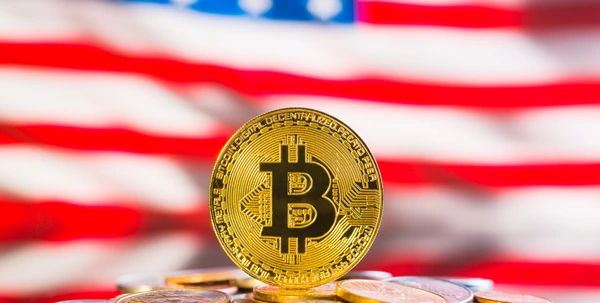- 480-597-1743


Introduction
Cryptocurrencies have captured widespread attention due to their innovative technology and potential for high returns. However, they come with significant risks due to their extreme price volatility, regulatory uncertainties, and speculative nature. This guide aims to provide a more technical understanding of the risks associated with cryptocurrency investments and their potential impact on a diversified portfolio.
1. Price Volatility and Market Behavior
Cryptocurrencies operate in a decentralized, largely unregulated environment, unlike traditional fiat currencies, which are stabilized by central banks through monetary policy. This decentralization leads to highly volatile price movements, often driven by speculative trading, market sentiment, regulatory news, and macroeconomic factors.
For example, Bitcoin, Ethereum, and other major cryptocurrencies have exhibited single-day price fluctuations exceeding 10%, resulting in substantial risk for investors. These sharp price swings make cryptocurrencies unsuitable as a medium of exchange or store of value in a stable financial system. Cryptocurrencies are more prone to significant price corrections or market crashes, especially when driven by investor panic or regulatory shifts.
2. Lack of Mechanisms for Value Stabilization
Traditional fiat currencies are anchored by regulatory frameworks and central bank interventions such as interest rate policies, open market operations, and quantitative easing. These mechanisms provide some level of stability and predictability, making fiat currencies reliable for daily transactions and long-term financial planning.
Cryptocurrencies, on the other hand, lack such stabilizing mechanisms. Their value is not underpinned by tangible assets, nor are they subject to monetary policies that can smooth out economic fluctuations. While certain cryptocurrencies, such as stablecoins, attempt to peg their value to fiat currencies or assets, they remain susceptible to regulatory scrutiny and systemic risks. The absence of a central governing authority or fiscal policy tools exacerbates their volatility, making them unsuitable for use as a primary currency in the broader economy.
3. Regulatory Landscape and Uncertainty
The regulatory environment surrounding cryptocurrencies has evolved under the leadership of both the Biden and Trump administrations, each taking differing approaches to oversight.
These contrasting regulatory environments highlight the uncertainty surrounding the future of cryptocurrencies. Regulatory changes can significantly impact market dynamics and valuations, adding an additional layer of risk for investors.
4. The Emergence and Risks of Meme Coins
Meme coins are a particularly volatile subset of the cryptocurrency market. These assets are typically created without any foundational value or utility and often gain popularity through internet memes or celebrity endorsements. Their price dynamics are largely driven by speculative interest and social media trends rather than technological advancements or real-world applications.
An example is the “Hawk Tuah Girl” meme coin ($HAWK), which surged to a market capitalization of $490 million shortly after its launch but then saw a rapid decline to $26.4 million within hours. This extreme volatility raises concerns about the integrity of meme coin markets and investor protections, as such assets can be subject to pump-and-dump schemes or market manipulation.
Similarly, the $TRUMP meme coin experienced a surge in price from $10 per token to $70, pushing its market capitalization above $14 billion. However, the concentration of ownership, with CIC Digital LLC (an affiliate of the Trump Organization) controlling approximately 80% of the token’s supply, further increases the risk of market manipulation and price instability. These speculative assets are highly sensitive to insider actions, celebrity endorsements, and market sentiment, making them inherently risky investments.
5. Lack of Intrinsic Value and Valuation Challenges
Traditional financial assets, such as stocks and bonds, are valued based on fundamental analysis, which includes factors like earnings, cash flow, market demand, and company assets. These metrics allow investors to assess the intrinsic value of an asset and make informed investment decisions.
In contrast, meme coins and other cryptocurrencies often lack any underlying asset or revenue-generating mechanism. Their value is primarily driven by market sentiment, media attention, and speculative trading. This makes it difficult, if not impossible, to apply traditional valuation methods, as there are no financial metrics or operational benchmarks to evaluate long-term potential.
Furthermore, cryptocurrencies like meme coins do not provide investors with tangible value such as dividends or ownership stakes in productive enterprises. Instead, their value is often determined by the psychological factors influencing market participants, such as fear of missing out (FOMO) or herd behavior. As such, meme coins are highly speculative and prone to dramatic fluctuations, making them unsuitable for conservative or long-term investors.
Cryptocurrencies, particularly speculative assets like meme coins, carry substantial risks that should not be underestimated. Their volatility, lack of intrinsic value, and regulatory uncertainties make them high-risk investments. While they may offer significant rewards for those willing to assume risk, they should not be relied upon as core components of a diversified investment portfolio.
Investors should approach cryptocurrencies with caution, particularly when considering meme coins or other assets driven by social media trends. It’s important to integrate them into your portfolio with clear understanding of the risks and ensure that your investment strategy is aligned with your long-term financial goals.
Disclosure: This is an informational article and should not be taken as financial advice. Always contact your financial advisor to understand how these trends may affect your specific situation. SG Wealth Managers does not take any political sides, and as such, will not make any commentary that is political in nature; rather, this is strictly an economic and financial discussion. Neither the information nor any opinion expressed comprises a solicitation for the purchase or sale of any security. This content is directed exclusively for the purpose of general education.


As a retirement planning expert, my goal is to help you secure your financial future by considering all aspects of your retirement strategy.
The estate services team for SG Insurance & Estate Services, LLC assists with providing general education services for estate planning, asset protection, legacy planning, and tax strategies. SG Insurance & Estate Services is not a law firm, cannot give legal advice, and does not prepare legal documents. For legal advice and/or representation, all clients are able to consult separately with an estate planning attorney or law firm.